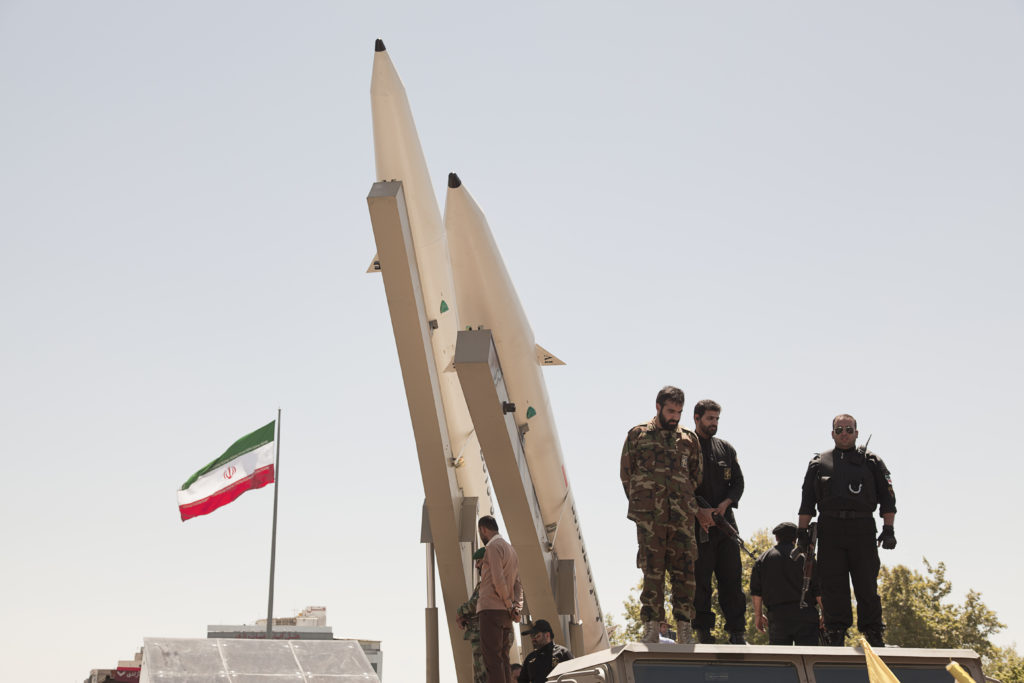December 6, 2019
On December 4, 2019, the New York Times reported that the Islamic Republic of Iran had exported ballistic missiles to its non-state clients in Iraq. The news is similar to Tehran’s activities in Yemen, where Iranian forces have sent ballistic and cruise missiles to the Houthis, its ally in the conflict, and it also mirrors Iran’s recent use of cruise missiles to attack Saudi Arabia’s oil and gas infrastructure. To discuss Iranian missile proliferation in the Middle East, Aaron Stein, the Director of the Middle East Program at the Foreign Policy Research Institute, spoke with Fabian Hinz, a Research Associate at the James Martin Center for Nonproliferation Studies, about the reports and what this means for Iran’s regional policy.

Quds Day rally, Display middleware missiles, Zulfiqar rocket, Iranian Revolutionary Guards, Iran Tehran, june 23, 2017. (Src: Shutterstock)
Aaron Stein: First, thanks for doing this. I read the New York Times piece with great interest. And, to be honest, it is not the first news outlet to make the claim that Iran had exported missiles to Iraq. We also know that Iran has exported missiles to the Houthis in Yemen. So let’s start there: What has been Iran’s missile export policy to non-state actors in recent years?
Fabian Hinz: Well, thank you so much! Iran has a policy of exporting artillery rockets, ballistic missiles, and, more recently, cruise missiles to non-state actors either allied with Tehran or just sending missiles outright to proxy groups it directly controls. We have seen evidence of Iran doing this in the cases of Gaza, Lebanon, Syria, and Yemen, so seeing Iran employ the same strategy in Iraq, a country in which it has a vast network of highly loyal clients, is not at all surprising. In general, as is the case with Iran’s missile arsenal itself, the material Iran is now exporting has greatly increased in quality in recent years. While in the mid-2000s transfers to allies and proxies in the region were limited to mostly artillery rockets, Iran is now capable and willing to deliver sophisticated equipment, such as precision-guided missiles, cruise missiles, and ballistic missiles with ranges up to 1000km to trusted parties throughout the Middle East. Islamic Revolutionary Guard Corps (IRGC) commanders have also been very open about the fact that they are already working on the next logical step: the transfer of production technology, so that its allied proxies can assemble these missiles in-country. Now, this is somewhat counterintuitive because one would expect Tehran to control the flow of arms as tightly as possible to gain maximum leverage over its allies and clients. However, for whatever reason, Iranian decision-makers have a very different view of things. They want their clients to be able to indigenously manufacture, or at least partially manufacture, the missiles they provide. Of course, more advanced systems will still require Iranian-made components. So, after the reports about Iranian missile transfers to Iraq, the potential provision of production equipment might be the next thing to look out for, in addition to the export of components to assemble missiles inside Iraq.
